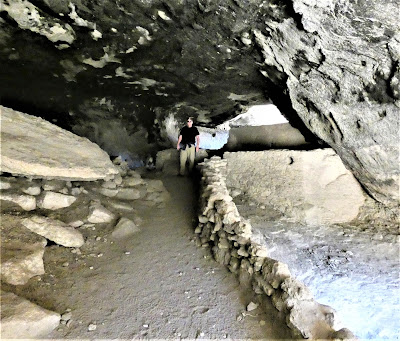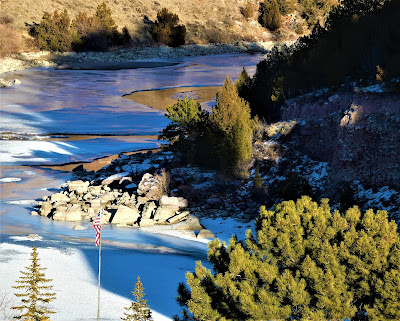Are
More Visitors the Answer?
Each
year, six million people visit Wyoming's best-known tourist sites, Yellowstone,
Grand Teton, and Devils Tower. Those are impressive numbers and bring in more
than a billion dollars. Interestingly about that, many folks visited Wyoming
State Parks last year, bringing in close to another billion dollars. One big
difference is that more than sixty percent of State Park visitors are Wyoming
residents. Overall visitation to Wyoming State Parks was up over twenty percent
last year. Great value for residents with a yearly park pass. Camping in state
parks remains popular, with many parks full to overfull each weekend, and
sometimes sites are hard to find mid-week – a nice dilemma.

The
mining and extraction industries continue to drive the most revenue for the
state. With doubts about the future of these industries, although most of the
monies are likely safe for another decade or so, something else needs to move
up. Tourism ranks second in revenue raised for the state and might be the best
candidate for growth. Overall about 12% of jobs in Wyoming are part of the
tourism industry. We need the tourists and probably need to do more to encourage
growth in the industry.
Agriculture
and manufacturing follow as the third and fourth essential money raisers for
our state — each industry contributes about a billion dollars to the state
coffers each year. With about 1.4 million cows (nearly three per person), Wyoming
agriculture centers around the beef industry and remains strong. Wyoming does
not have a lot of tillable land. Of all the farm and ranch land in the state,
only about 10% is used for crops.
Manufacturing
in the state is growing slowly because a big part of manufacturing in the state
centers around the oil and gas industry, with refineries in five Wyoming
communities facing an uncertain long-term future. Banking on manufacturing and
or increasing it might not be sustainable as a goal for the long-term future.
What
We Can't Do – We can't do much about the coming
decline in the mineral extraction industry. We cannot create another National
Park, and we will have a tough time increasing agriculture production in the
state. Some might argue that the cattle and maybe sheep/goat industry has room
for growth, but with the government controlling half of Wyoming – who knows
what will or will not be allowed.
What
We Can Do – Work on tourism!
Get people to stay
longer. I thought it was a shame that the National Parks destroyed so many
mountain goats in Teton Park in 2020. I would love to have seen some moved to
state parklands. After all, the 12 Wyoming State Parks make up about 100,000
total acres; an additional park attraction would be a welcome addition. I know
the arguments about disease and competition with Big Horn Sheep and local
domestic sheep and goat herds. But, others have found a way – why not us. We
were thrilled to see a mountain goat in the Black Hills a few years ago – it was
a special treat.
Speaking
of the Black Hills, I know of Wyoming people who go to Custer State Park to see
wild horses and Burros and pay to drive through the park that also features a
nice bison heard. Why not here?
We
have bison at Hot Springs, and they seem to do well. The addition of bison,
wild horses, and mountain goats could make some of our parks even more
attractive.
We
need to keep expanding for younger people and those new to the state parks
scene. Additions, such as ziplines, sledding areas, remote camping areas, and
more hiking and biking trails engage a wide range of citizens and visitors. I
have noticed some additions recently to parks, like the archery range and
hidden treasures in Guernsey, both great ideas.
I
also like the passport/prizes idea that some states use to increase tourist
numbers. Any person could purchase a small passport-like book with places to
stamp or have signed when visiting a park. Pretty simple - each passport holder
gets one year, or half a year, to visit all 12 parks to enter the giveaway. The
prizes would be sponsored and funded by private individuals or donors who would
be recognized in the passport. (These passports would make terrific Christmas
stocking stuffers). With this one, I am hoping that gas prices will not remain
where they are now as I write this.
I
have a lot more ideas. Some might even be good. Who knows?
What
do you think?
My
New Slogan for Wyoming
Wyoming
Wide-open
spaces & not many people
Time
to dream
Hike
a trail
Climb
a mountain
Breath deeply & look
around
It's
pretty special
Wyoming
It
is time to quit being reactionary and become visionaries for our state.
Have a terrific week!

.JPG)
.JPG)
.JPG)

.JPG)
.JPG)
.JPG)

.JPG)
.JPG)



























